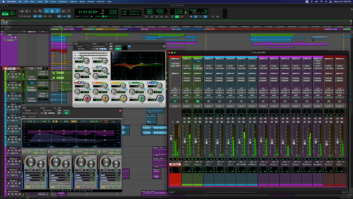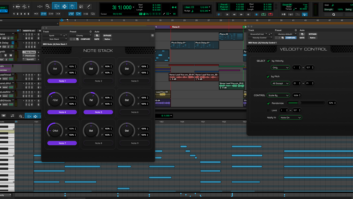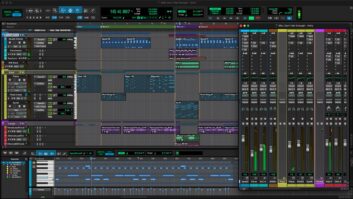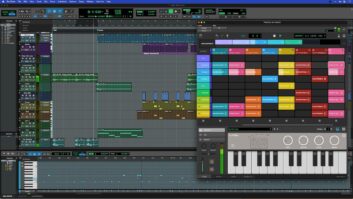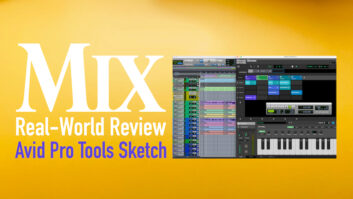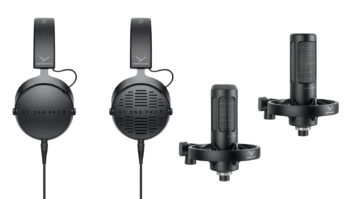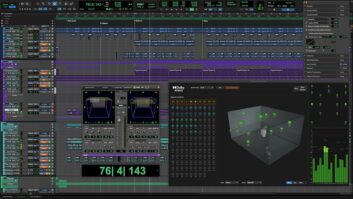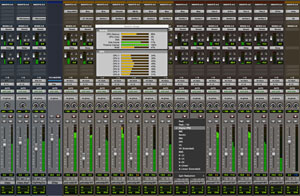
Pro Tools HD 11 exclusively offers new metering options that provide a variety of scale and ballistics options.
The number “11” carries a certain mystique in the music/recording industry, thanks to Nigel Tufnel and his famous Marshall amp, with ensuing jokes showing up in places as far afield as Toy Story. The quote, and the number, is all about power and how we constantly search for more, more, more.
Last night, Avid, in advance of NAB and Musikmesse, announced the much-anticipated (and endlessly rumored) Pro Tools 11, which is all about power…and speed. It’s not the type of upgrade that adds a lot of features and me-too capabilities, as we’ve seen in the DAW market of the last 10 years. It’s more of a complete re-boot, where what you don’t see is what you get the most from. Yes, there will be a lot of focus on the addition of a 64-bit architecture, which many users were hoping for in PT10. But even that’s not the big news; that was expected. The big news is the complete revamp and rewriting of the Audio Engine.

The all-new Avid Audio Engine offers multiple times the processing power of Pro Tools 10 for working more virtual instruments and effects plug-ins than ever before.
The guts of the Pro Tools Audio Engine had essentially remained unchanged since the introduction of TDM back in 2002-03. It was based on fixed-point math, and every bit of code written to add features and the like was added on, making it slightly cumbersome a decade later, despite accelerators and the like. While developing PT10 and introducing AAX and a preliminary set of Pro Plug-ins (a necessary interim step to prepare the third-party plug-in community), a separate Avid team was simultaneously rewriting the Audio Engine from the ground up for 11, basing it on floating-point algorithms.
What that means in a real sense is that users have tons more processing power on the same PT10 hardware, with the ability to run far more virtual instruments and more channels loaded with more plug-ins. What that means beneath the hood is that developers have taken advantage of dynamic allocation of processing, with a separate hardware buffer for the input channels and reallocation of processing resources as needed. It is also said to ensure ultra-low latency record monitoring without choking plug-in performance.

Pro Tools 11 offers faster offline bounce capabilities.
The other big new feature, which users have been clamoring for in forums and on Avid’s IdeaScale forum, is offline bouncing. Pro Tools 11 time-stamps the automation and can bounce tracks channel by channel (not stems) at up to 150-times real time.
Likewise, users have been asking for expanded metering options and support of various industry standards, and Pro Tools 11 has them, including options to show gain reduction for all dynamics on every channel.
And finally, in detailing the main bullet points, Avid also rewrote its Video Engine and built it into Pro Tools 11, meaning that post-production engineers can play and edit a wide range of HD Video formats directly in the PT timeline without transcoding.
Pro Tools 11 is Session-compatible and bidirectional going back to PT Version 5.1, though they are retiring TDM, with PT10 being the last HD Accel/TDM release. Upgrade pricing and options are for both Pro Tools 11 and Pro Tools HD 11 and comparable with the move from 9 to 10.
But again, the real story is not about additional features; it’s about speed and workflow. Avid took a lot of hits from the creative community with some confusion around the release of PT10. That won’t be the case here. There will no doubt be a lot of skeptics saying, “Well it’s about time they added 64-bit!” And that’s okay; the company is fully aware of user feedback, making a concerted worldwide effort these past two years to reach out to their user base. Avid, as a company, has never raced to be first to market; it’s not part of their business plan. They just want to be the best at doing what they do.
With Pro Tools 11, they have made a giant leap forward, and they have received raves from early power testers. When users get it in their hands sometime in late Q2, it will become clear that the emphasis on speed and power pays off in a big way.
Read Avid’s official Pro Tools 11 press release for NAB 2013.
